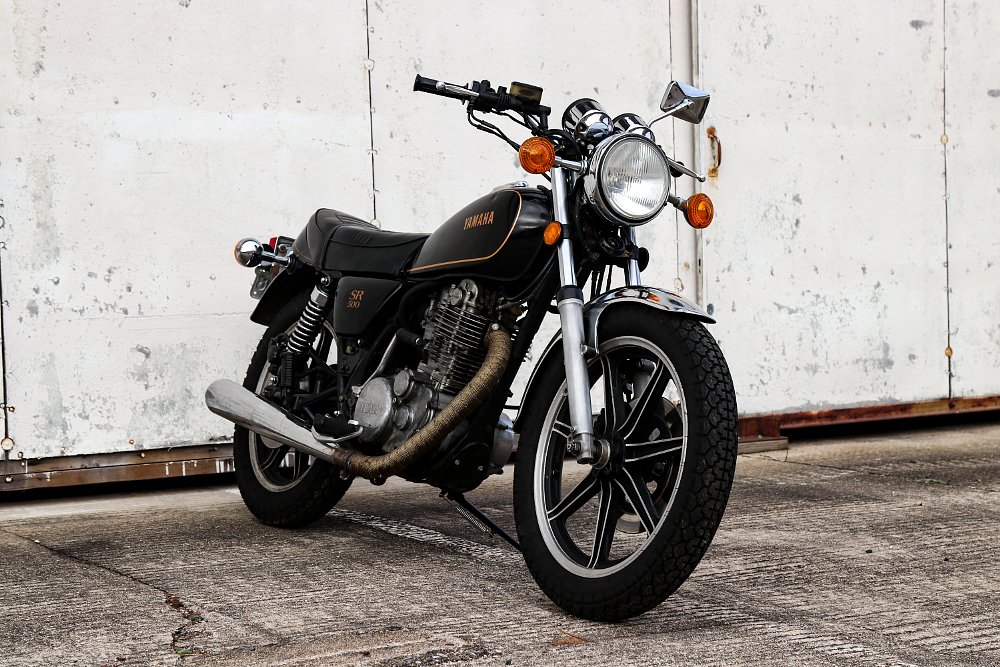Rage buy.
Most "professional" motorcycle reviews don't start with words like that because most reviews don't involve a motorcycle owned by this "professional." Of the few motorcycles that do, most have not been purchased out of anger, but here we are.
I have a good friend, who, like me, owns a small shop. Either of us will fix, buy, and sell any motorized contraption if it turns a buck. We've recently coined this term ("rage buying") for a purchase that's too good to turn down, even if funds are low, the shop is stuffed, or the piece of equipment in question isn't desirable. I mention this because you're reading a review on a rage buy that'll help me turn that buck, and you deserve to know that. Today, I offer you one of the weirder motorcycles to come rolling out of Honda's birth canal, a first-year (so 1978) CX500.
I have history with these. I think I've owned four; they proliferated in my garage when I was young and broke and wanted to ride a lot on a beggar's budget. I know them pretty well, which is part of why I scooped this strange, strange little bike.
Let me tell you a bit about it.
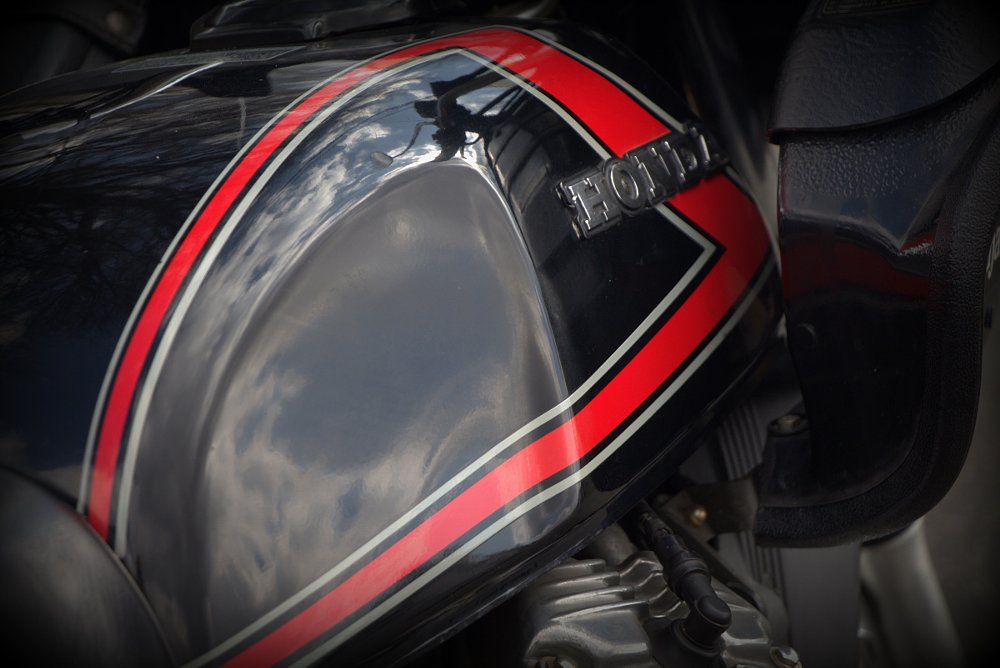
Diamond in the rough
The CX is a fruitcake; we'll get to that in a minute. But let me show you this particular specimen I dragged home first, since this thing isn't exactly showroom-ready. I bought the CX for a song on a tip from an acquaintance. I purchased it as a non-runner, but the mileage was low and it had some stuff going for it.
The paint on this thing is original and it is nice. The seat vinyl is also original and in good shape. Most of these I've seen in the past 20 years have all fallen prey to hipsters with more cutoff wheels and ambition than talent. Many turn up for sale with a goofy attempt at a café job, which is difficult on these — significant portions of the frame are pressed sheet steel, not welded tubing.
This bike suffered no such fate.
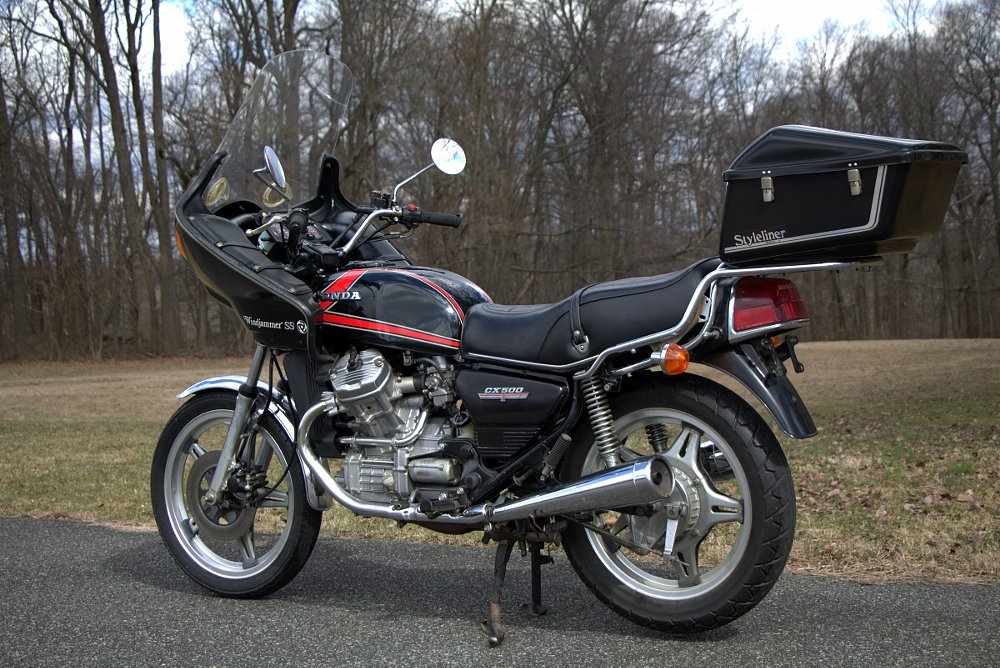
It wears a Vetter Windjammer SS fairing, complete right down to its stash pocket key and cigarette lighter. A Styleliner top box was put on along with the requisite top rack at some point, and opening it yielded a period-correct square of piss-yellow shag rug acting as a liner. As a younger man, this was the sort of thing I'd rip off as I loaded the bike onto the truck, but nowadays I don't get into such a rush. To be honest, you don't really see 'em like this any more, and even though this isn't my cup of tea, this is a popular look among a subset of collectors. Someone will want this in its current form, and if they don't, I have an OEM-paint nacelle with the turn signals to put 'er back to stock. (I should probably do this to increase the appeal, but I won't. The fairing will get left behind, and then I'll store it forever because it will break my heart to scrap it.)
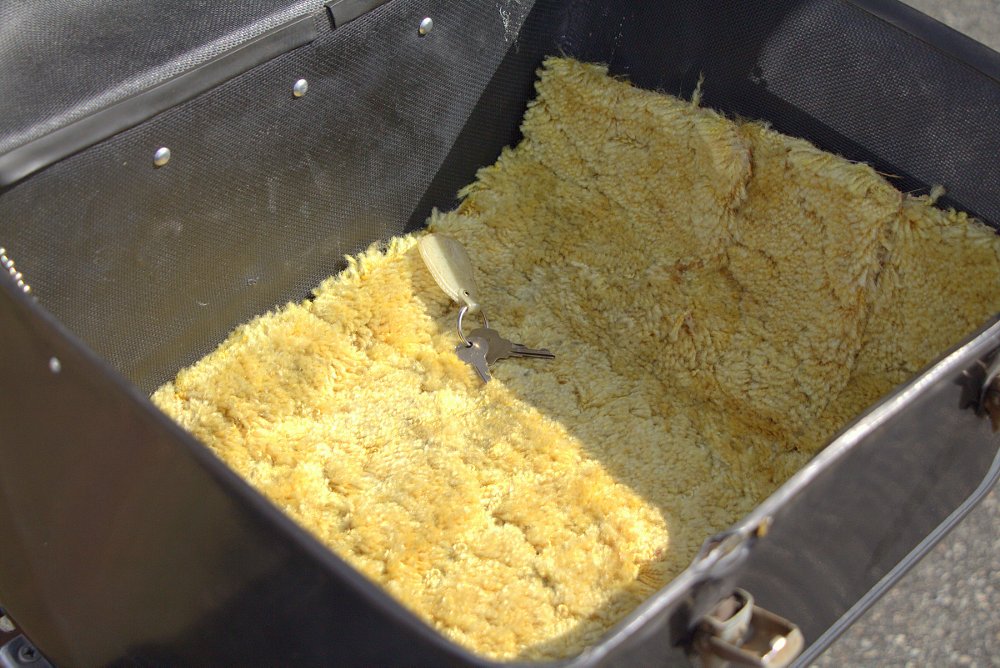
Anyone who has spent any time around the CX series of bikes knows to check for a few weak areas. The first is the cast-iron exhaust collector that joins the cylinder banks. This one was mint, another driver in my decision to purchase.
Very early CXs were often subject to a cam-chain tensioner recall. One can see if the recall has been performed by examining the engine's number boss. Dealers were instructed to stamp three dots in the numbers boss preceding the motor number when the recall was completed. This bike does not have its dots, indicating that the recall hasn't been performed.
That's actually not a bad thing. Here's my logic:
Sort of strangely, the recall is still honored to this day. If you look at this crazy engine hanging out there in the breeze, it should become apparent that the charge-y bits are at the back of the engine — exactly where the cam chain tensioner shoes are (as well as a few other areas that could use some attention). Whoever buys my bike can drop it off at the local Honda dealer and get the recall job done for free. Kick in a few bucks for an ElectroSport heavy-duty stator, which the shop should install for no labor at all, and this bike will be more reliable than it was stock.
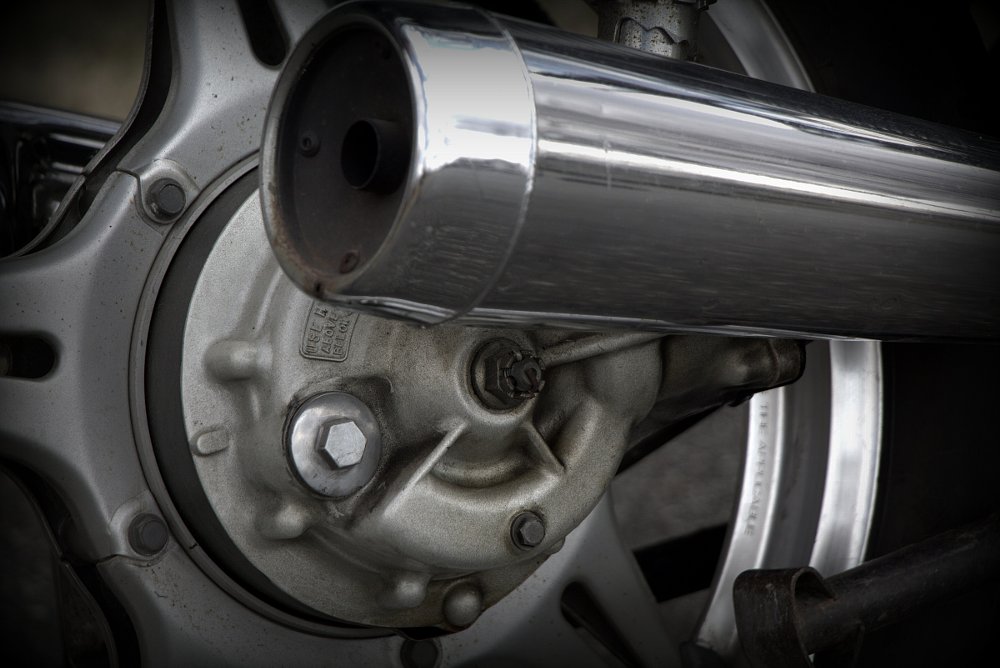
On my end, I got the bike fired up after it had fresh fluids and slammed a new battery in it. I did not put tires on it or rebuild the sticky front caliper. With tires, brake work, and the dealer recall stuff, for less than a thousand bucks to farm out the work, the buyer will own a bike that will earn an Antique Motorcycle Club of America Junior First award and knock down some Long Haul awards, too. Less than five grand all-in to be a player in the antique bike game. That's a steal!
I did satisfy my inner grump, though, and get it together enough (running and stopping) so I could take it for a spin to repeat a section of my life.
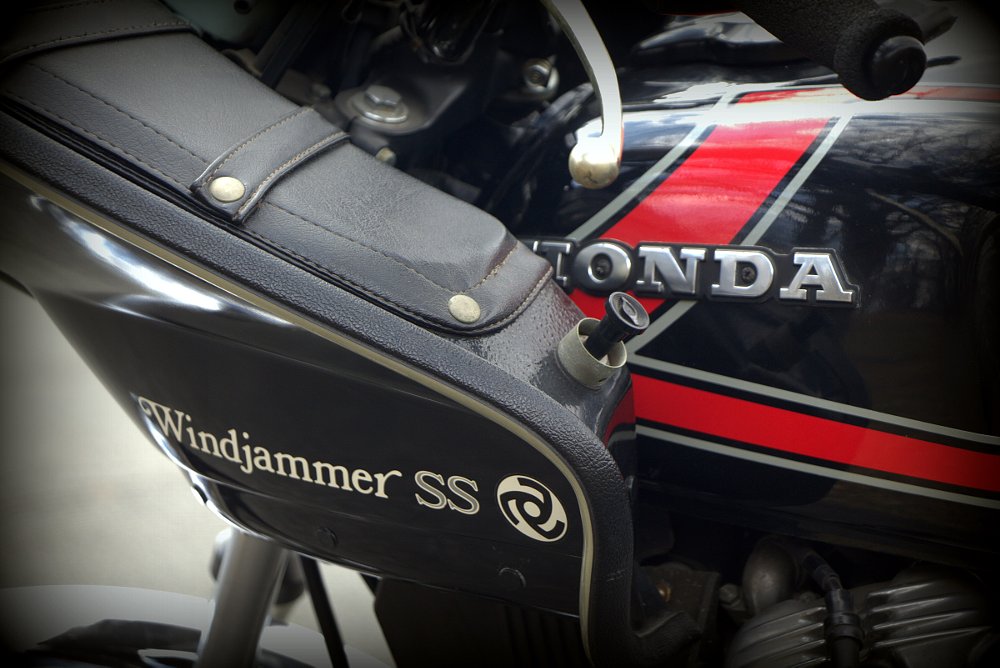
Riding a CX500, all these years later
How milquetoast this motorcycle is! It doesn't even suck; a sucky motorcycle would at very least deliver a more memorable riding experience than this old heap. Now, before you get all up in arms if you have one of these little Guzzi-looking bastards, I've owned these machines, I know them, and I know what other machines ride like. As I said, I think this is my fourth one. Maybe fifth. I don't know. I'm not intentionally reliving my youth (for the most part, anyway), I'm just living long enough to see everything come by a second time, I suppose. I guess when a bike from your past drops into your lap years later, you relive it whether you like it or not.
Back to the boring-ness. Right off the bat I cannot help but wonder why this bike puts me to sleep; on paper, there's absolutely zero reason for that to occur. Consider this unlikely list of attributes the CX has:
- 1970s-era
- A Honda V-twin
- Liquid-cooled
- Has four valves per cylinder, but actuated by pushrods
- Longitudinal crankshaft
- Stressed-member design
- Shaft drive
- Middleweight
It is an oddity but a technological tour de force. I mean, I guess now you could maybe point to a liquid-cooled Guzzi or something that is similar, but back then? This mahfk was weird. And yet, with modest power (48 little ponies), a noodle fork (33 mm), and a partially pressed-steel frame so ugly even a mother could turn her back on it, you'd never guess this bike was packed with cool technology.
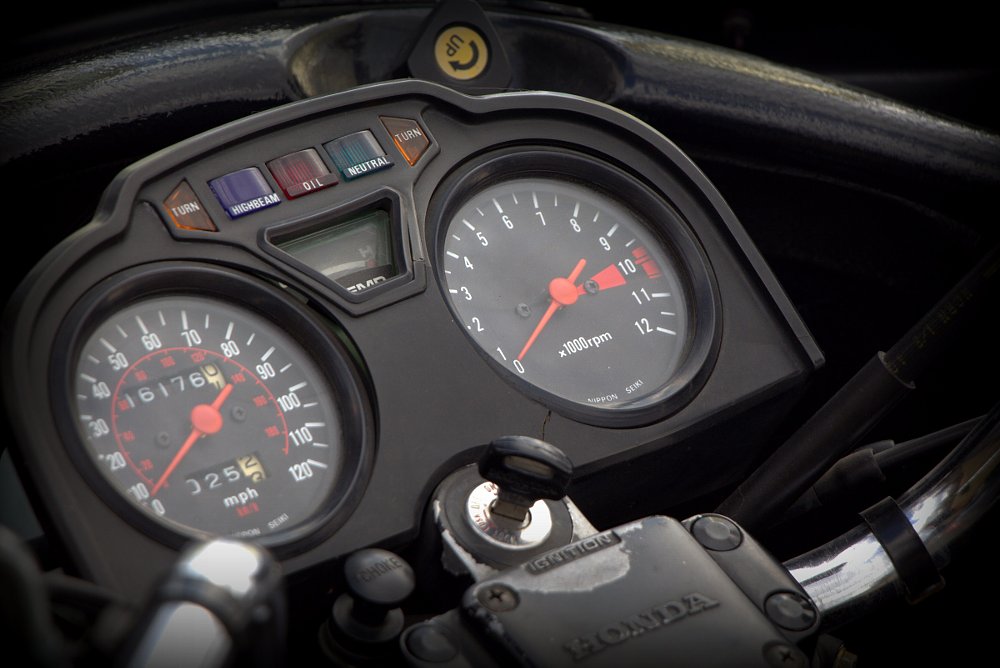
I don’t know where to start. There are so many neat features that I will have trouble relating to the forgettable ride. These little guys have such a cool engine layout. The CX was Honda's first crack at a V-twin, which is neat, and in inimitable Honda fashion, it's anything but conventional.
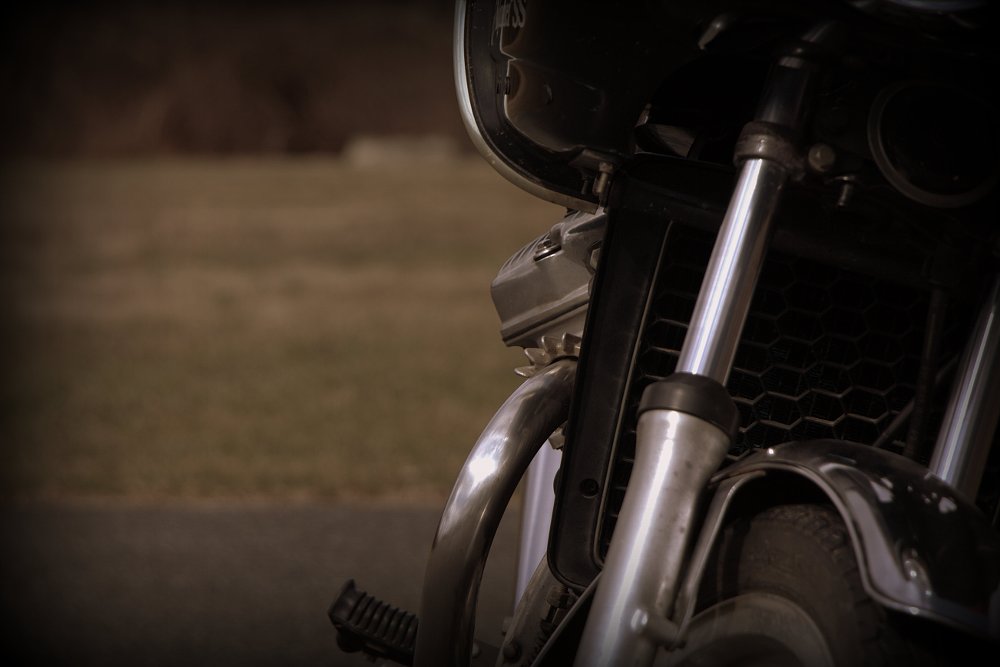
First, they stuck it in the bike the wrong way; that's pretty flippin' noticeable when you climb aboard and bang yer knee. Honda twisted the cylinder heads 22 degrees inwards at the rear to keep the carbs from fouling the rider's legs and presumably to get the exhaust splayed out enough to stuff a radiator on the front. This makes for easily accessed carburetors as well as the world's easiest valve adjustments. I've done many of them without removing so much as the tank.
The little engines sound phenomenal uncorked, but this one was wearing all of its OEM exhaust equipment, which I am loathe to remove as everything is in great shape. Riding it was a bit like hearing Axl Rose politely clear his throat and no more. If you crank up the loud handle, though, it starts to make better sounds even with stock muffulators on. Sink your knuckles into that old-man-aftermarket-foam-replacement grip and wind it up. Let 'er rip, tater chip. You won't hurt yourself. Trust me.
Now, in its defense, the ride is smooth and the power tractable. There are pleasant vibes, some requisite shaft-jacking, and the warm security of knowing the bike, known as the "plastic maggot" due to its reliability as a courier mount, will basically never break down.
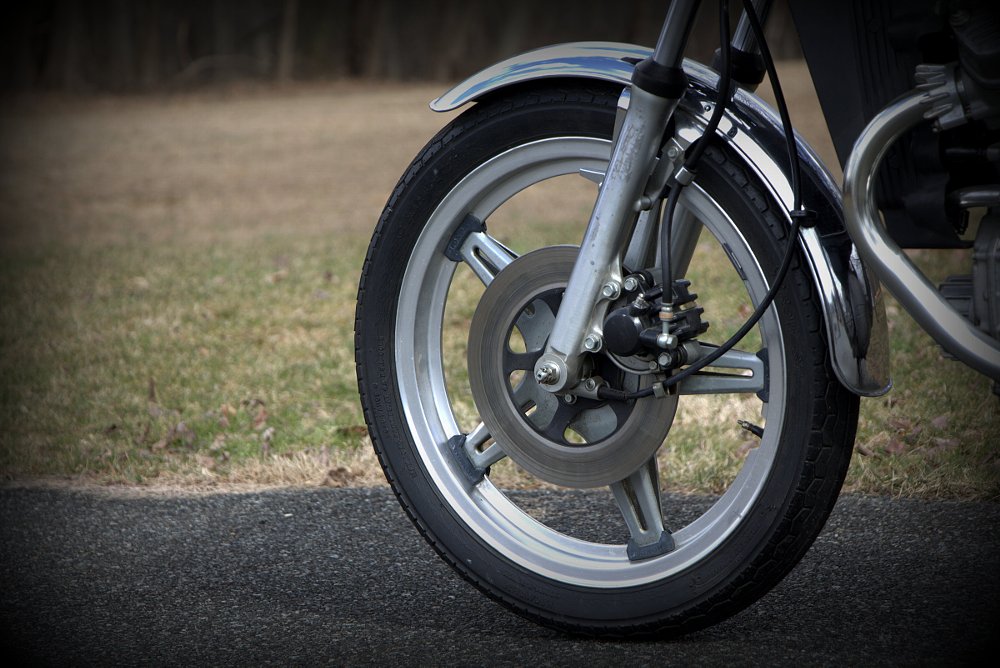
The front end is awful. Those 33 mm forks weren't enough in the disco era, but in 2023? This CX's sturdy-built pilot added a lot of unplanned weight, and the Windjammer has more glass than a head shop. The See Yex is taxed with this rider and equipment combo, to say the least. Same deal with the brakes — they were no great shakes during Carter's term, and time was not what they needed. The mechanical drum is oddly good for what it is, but the front leaves much to be desired. It stops the bike. Eventually. And this one has what feels like a sticky piston — not a selling point.
The tires were so worn I could see the air in them, but I still pushed 'em a little bit. The bike handles with alacrity mediocrity. It turned. The bike did not fail to stop going straight. That's… it. One neat part about the handling is the wheels. This bike features ComStars, Honda's cheap-but-effective-and-innovative way to make a wheel. They basically took an aluminum rim and riveted an alloy hub and alloy spokes together, claiming that they were strong (like a cast wheel) but presumably offered enough radial and lateral flex to outperform a cast alloy that might crack. The wheels enabled the CX to be the first motorcycle to sport tubeless tires, a rather notable distinction in my estimation.
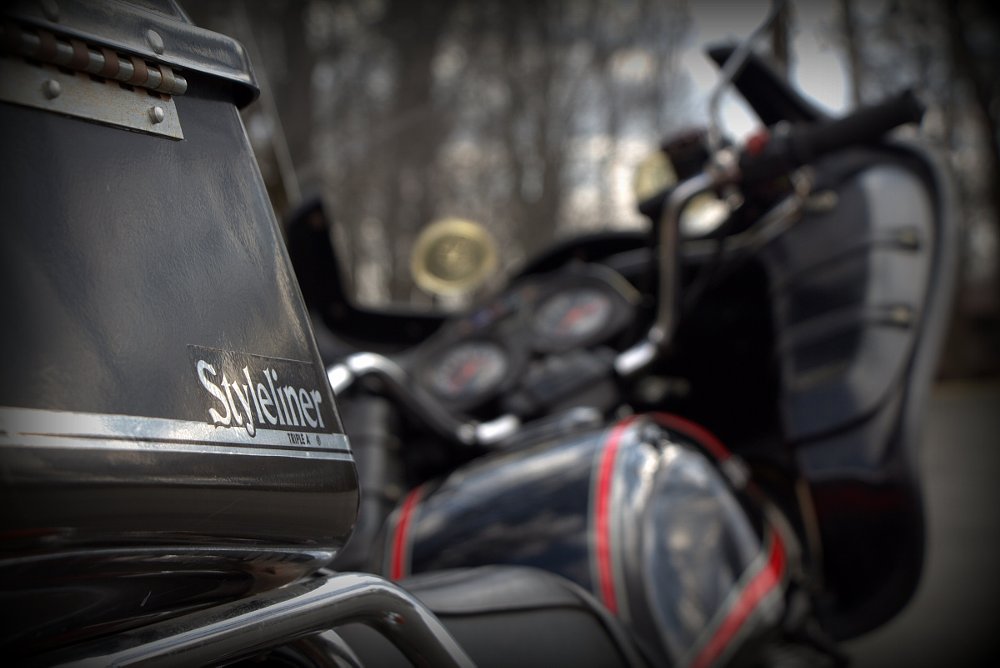
Epilogue
In 1978, the CX was only offered in one flavor, which you see here. This bike spawned some strange relatives, though. There was the Silver Wing, a miniature tourer that forced the rider to choose between a top box or a passenger. Those came in both 500 and 650 displacements. Also hawked were the Custom and Deluxe models. The Customs were the ones I acquired as a young mechaniclet because everyone hated them. They had a stepped seat and weird buckhorn bars and were mostly a lazy-ass Honda attempt at a cruiser. The Deluxe was… I don't know, like a fancier version of the regular model; it's a standard. Honda also rolled out a 500 turbocharged sporty-ish bike (not a sport bike) and did the same with a 650.
These bikes were dumped in the U.S.A., like many others. Because of their deflated price when new, they were also cheap to buy secondhand for a very long time. "Comically affordable" is how I'd describe the price in the early oughties when I was buying them. I know the most I ever paid for one of these was $500 and I also recall riding one original paint example home after handing over just $250. Many got sliced up into weird café things with buxom chests and no ass. The cheapness and the propensity to be cut up are interrelated, of course, which is ironic, because it's the very thing that later makes an original example so valuable. (See the Yamaha XS650 for one of the most notable examples of this phenomenon in action.)
And I think that's why I’m still fond of these little things. I don't want one. (Rage buy, remember? This is a flippet acquisition. I'm trying to say "C-YA" to this CX. Give me a yell if you want to buy this motorcycle!) But they were technological wizardry available on a budget. They made me a better mechanic: They were sturdy, but everything was put together differently than all the other things I worked on.
No, my C-YA CX doesn't feel special now, but Honda employed every engineering trick in the book and the little weirdo they cranked out feels just like a nice little motorcycle in 2023, which is a triumph and achievement all its own, because this must have been like buying a flippin' spaceship in '78.
The average nature of this machine means they were to be had at below-average prices, and the ones I bought kept me in the game when I couldn't afford anything else upon which to make my miles. (And I do mean anything.) I've talked to a lot of folks my age and heard similar stories, so if you see a graying, grizzled middle-aged man staring for too long at one of these pedestrian motorcycles, it might be admiration not for the motorcycle, but for the financial anomaly it represents that existed only in a sliver of time that was, for some, a golden age of riding.
See ya around, see ex.













